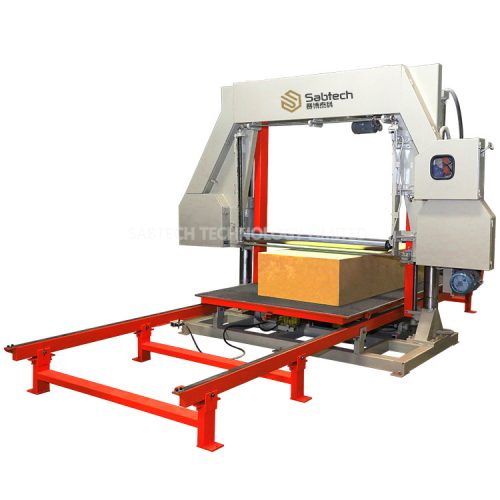Foam cutting machines are efficient tools for cutting and processing various foam materials, providing convenience for production and manufacturing. However, during regular operation, some abnormal situations may occur, potentially affecting work efficiency or even causing equipment damage. Therefore, understanding and addressing operational anomalies in foam cutting machines is crucial.
Here are possible abnormal situations during the operation of a foam cutting machine and their corresponding solutions, hoping this information is helpful for you:
1. Overheating of the blade box:
Possible Causes: Prolonged operating time or high density of the cut foam.
Solutions: Adjust the blade box, ensure the blade belt is in a straight line within the blade box steps, and the blade edge protrudes 10-6 mm. Replace the blade box if necessary.
2. Severe vibration of the blade grinding motor:
Possible Causes: Uneven sand wheel circumference or bending/deformation of the blade grinding motor shaft.
Solutions: Check the sand wheel and motor shaft; replace the motor shaft if needed.
3. Buzzing sound from the blade wheel:
Possible Causes: Excessive dirt on the blade wheel surface, insufficient lubrication oil in the bearing, inaccurate blade belt installation, etc.
Solutions: Clean the blade wheel surface, check lubrication and tensioning devices, and ensure correct blade belt installation.
4. Severe blade marks:
Possible Causes: Dull blade, curling, jumping, uneven interfaces, etc.
Solutions: Check blade sharpness, curling, and jumping; ensure a smooth interface and maintain the blade and blade frame in good condition.
5. Uneven thickness of the cut foam:
Possible Causes: Misaligned baffle with the blade belt, inaccurate blade belt installation, dull blade, curling, etc.
Solutions: Check the baffle alignment, ensure accurate blade belt installation, and adjust both ends of the toothed rail and gear to maintain consistent hanging positions.
6. Frequent blade belt breakage:
Possible Causes: Improper positioning during blade wheel reversal, low-quality blade belt, loose shaft or bearing, damaged surface of the blade wheel rubber.
Solutions: Check blade wheel alignment during reversal, use high-quality blade belts with secure interfaces, examine shaft and bearing for any play, and inspect the blade wheel surface for damage.
7. Excessive noise during blade belt operation:
Possible Causes: Damaged blade wheel bearings, surface damage to the blade wheel, friction between the blade belt and worktable pressure bar, misalignment of the positioning track pulley.
Solutions: Check for bearing damage, inspect the blade wheel surface, ensure a clean blade belt, and adjust the positioning track pulley if necessary.
8. Loud noise during the lifting and lowering of the machine gantry:
Possible Causes: Lack of lubrication on the column screw, presence of debris or trash in the column and sleeve seal.
Solutions: Ensure proper lubrication of the column screw and check for debris or trash in the column and sleeve seal.

